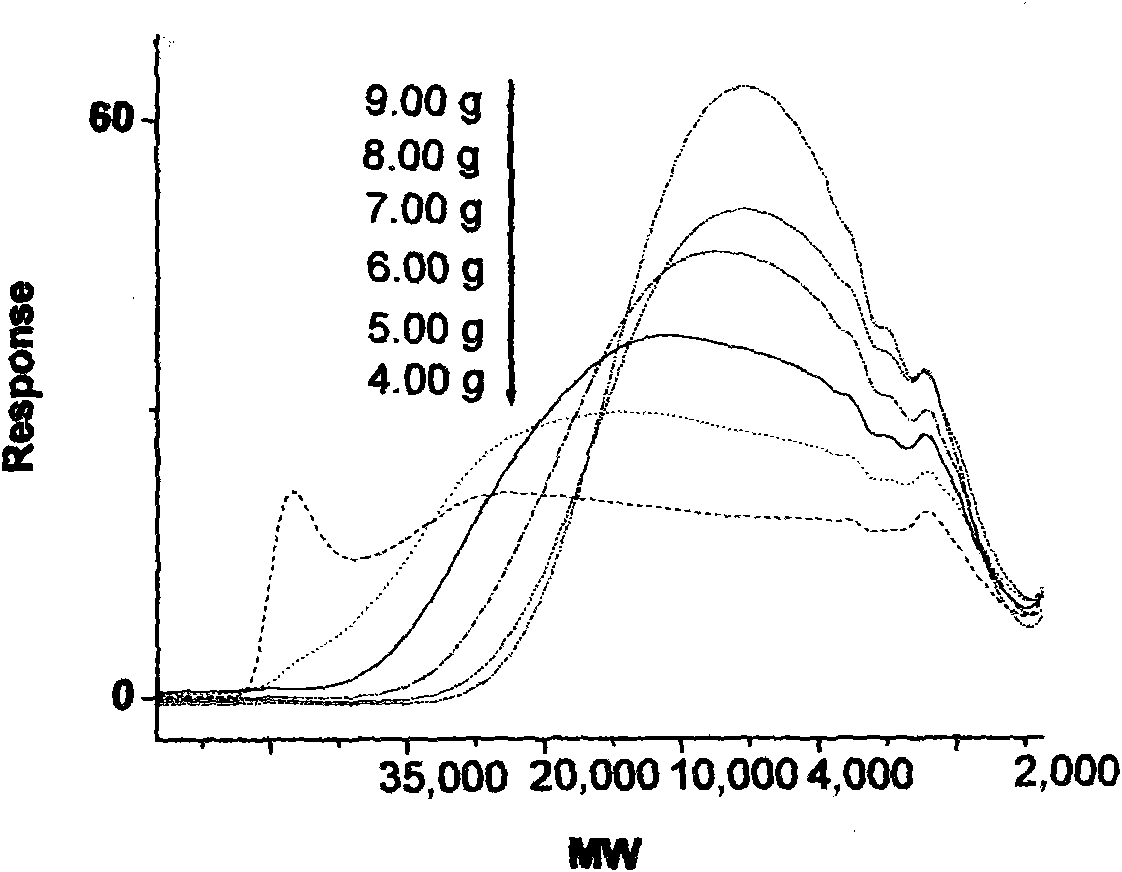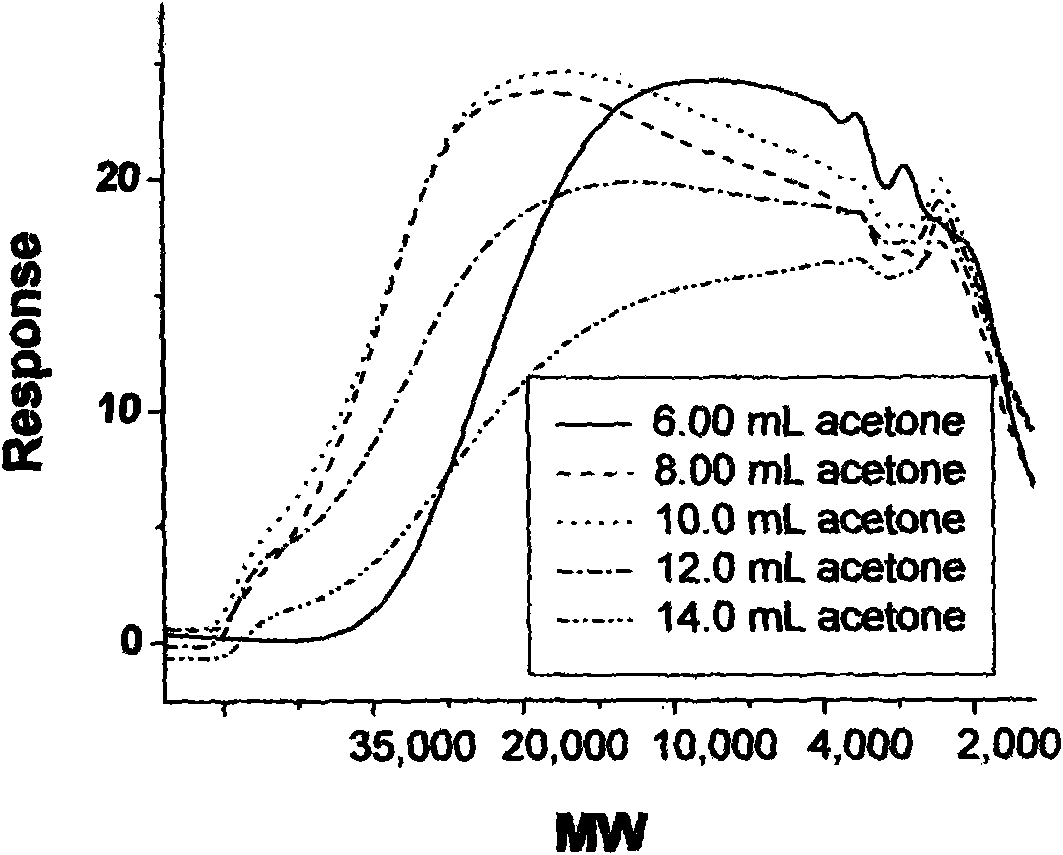Method for treating waste water from rubber antioxidant tmq (RD) device
A technology of rubber anti-aging agent and wastewater, which is applied in chemical instruments and methods, multi-stage water/sewage treatment, water/sludge/sewage treatment, etc., to avoid pollution of the environment, reduce costs, and realize the effects of resource utilization
- Summary
- Abstract
- Description
- Claims
- Application Information
AI Technical Summary
Problems solved by technology
Method used
Image
Examples
Embodiment 1
[0065] Take 100mL rubber antioxidant RD device waste water, add 4-9g sodium sulfite to it, dissolve and heat to 40°C, add 10mL acetone, react for 30min and then heat up to 80°C, add 20mL formaldehyde solution, continue to react for 1h, keep the temperature Add 950 parts of RD waste water and react for 1 hour to make a composite coal-water slurry additive with an effective concentration of 0.5%; naturally cool to room temperature, and its different molecular weight distribution curves are as follows: figure 1 As shown, the molecular weight of the product decreases significantly with the increase of the amount of sulfonating agent. Wherein the occurrence of sodium sulfite being 4g causes the hydrophilicity of the product to decrease due to insufficient sulfonation, forming a light yellow insoluble matter. The non-sticky coal is ground by a ball mill to obtain coal powder with a mass percentage of particles with an average particle size of less than 75 μm greater than 80%. The co...
Embodiment 2
[0067] Take 100mL of rubber antioxidant RD device waste water, add 5g of sodium sulfite to it, dissolve and heat to 40°C, add 4-14mL of acetone, react for 30min and then heat up to 80°C, add 20mL of formaldehyde solution, continue to react for 1h, keep the temperature Add 950 parts of RD waste water and react for 1 hour to make a composite coal-water slurry additive with an effective concentration of 0.5%; naturally cool to room temperature, and its different molecular weight distribution curves are as follows: figure 2 As shown, with the increase of the amount of acetone, the molecular weight of the product first increases and then decreases. When the amount of acetone is small, the molecular weight may be small due to excessive sulfonation, and the initial reaction rate is low; and when the amount of acetone is large, the reaction rate is too fast, and the large ketone-aldehyde ratio is likely to cause a reduction in the degree of polymerization, so that Molecular weight de...
Embodiment 3
[0069] Take 100mL of rubber antioxidant RD device waste water, add 5g of sodium sulfite to it, dissolve and heat to 40°C, add 10mL of acetone, react for 30min and then heat up to 80°C, add 12-24mL of formaldehyde solution, continue to react for 1h, keep the temperature Add 950 parts of RD waste water and react for 1 hour to make a composite coal-water slurry additive with an effective concentration of 0.5%; naturally cool to room temperature, and its different molecular weight distribution curves are as follows: image 3 As shown, with the increase of the amount of formaldehyde, the molecular weight distribution of the product has a greater impact. The non-sticky coal is ground by a ball mill to obtain coal powder with a mass percentage of particles with an average particle size of less than 75 μm greater than 80%. The composite coal-water slurry additive obtained by reacting 20ml of formaldehyde and the non-sticky coal powder are in a mass ratio of 38:62 After preparation and...
PUM
| Property | Measurement | Unit |
|---|---|---|
| particle size | aaaaa | aaaaa |
| shear viscosity | aaaaa | aaaaa |
| molecular weight distribution | aaaaa | aaaaa |
Abstract
Description
Claims
Application Information
 Login to View More
Login to View More - R&D
- Intellectual Property
- Life Sciences
- Materials
- Tech Scout
- Unparalleled Data Quality
- Higher Quality Content
- 60% Fewer Hallucinations
Browse by: Latest US Patents, China's latest patents, Technical Efficacy Thesaurus, Application Domain, Technology Topic, Popular Technical Reports.
© 2025 PatSnap. All rights reserved.Legal|Privacy policy|Modern Slavery Act Transparency Statement|Sitemap|About US| Contact US: help@patsnap.com



